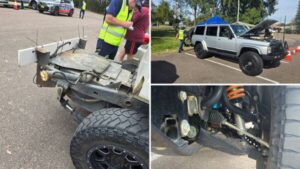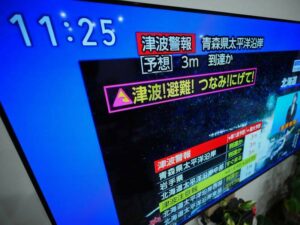
Astronauts returning from long-duration missions aboard the International Space Station (ISS) are experiencing significant and unexpected changes in their vision. Approximately 70% of these astronauts report vision problems, raising concerns about the long-term effects of space travel on ocular health. This phenomenon, identified as Spaceflight Associated Neuro-ocular Syndrome (SANS), poses a substantial challenge for future missions, especially those planned for Mars.
Dr. Sarah Johnson, who spent six months on the ISS, first observed her eyesight changing upon her return. Text that had been clear before her mission became noticeably blurry. Many other astronauts have shared similar experiences, including difficulty reading and blurred distance vision, with some issues persisting for years after their return to Earth.
The underlying cause of these visual disturbances appears to be the conditions of microgravity. While on Earth, gravity naturally directs bodily fluids downward. In the absence of this gravitational pull, fluids redistribute within the body, leading to facial puffiness and increased pressure inside the skull. This elevated pressure can flatten the back of the eyeball and cause swelling of the optic nerve, resulting in the vision problems experienced by astronauts.
Implications for Future Space Exploration
The implications of these findings are significant, particularly concerning missions to Mars, which could last between two to three years. Dr. Michael Roberts, NASA’s vision research lead, emphasizes the urgent need for further understanding: “We need to understand whether these changes stabilise or continue worsening over time. An astronaut with severely compromised vision could jeopardise an entire Mars mission.”
In response to these challenges, NASA is actively developing several countermeasures. These include special contact lenses, medications aimed at reducing fluid pressure, and exercise protocols designed to maintain normal circulation. Additionally, researchers are testing the Visual Impairment Intracranial Pressure (VIIP) chamber, a device intended to simulate Earth-like pressure conditions for the eyes, which may help mitigate these negative effects.
Broader Benefits of Space Research
The research into the impacts of space travel on vision carries implications beyond the realm of astronaut health. The insights gained could potentially benefit individuals on Earth suffering from conditions such as glaucoma and intracranial hypertension. Understanding how pressure affects vision may lead to improved treatment options for these conditions.
As humanity prepares for longer missions into space, uncovering the challenges posed by microgravity is crucial. The ongoing research at NASA and aboard the ISS aims to ensure that when humans finally embark on a mission to Mars, they can navigate their environment with clarity and confidence. The quest for solutions to SANS will continue, reinforcing the importance of understanding our bodies’ adaptations to the unique conditions of space travel.







